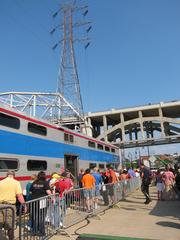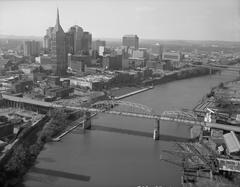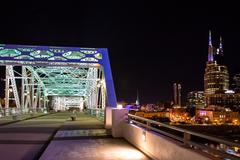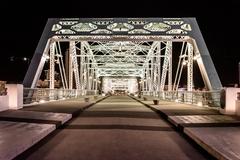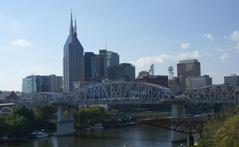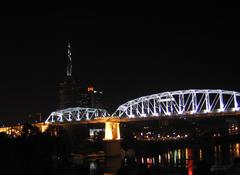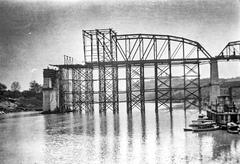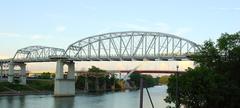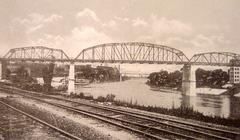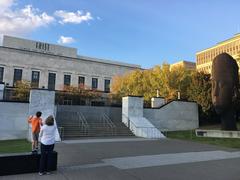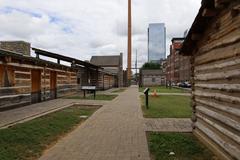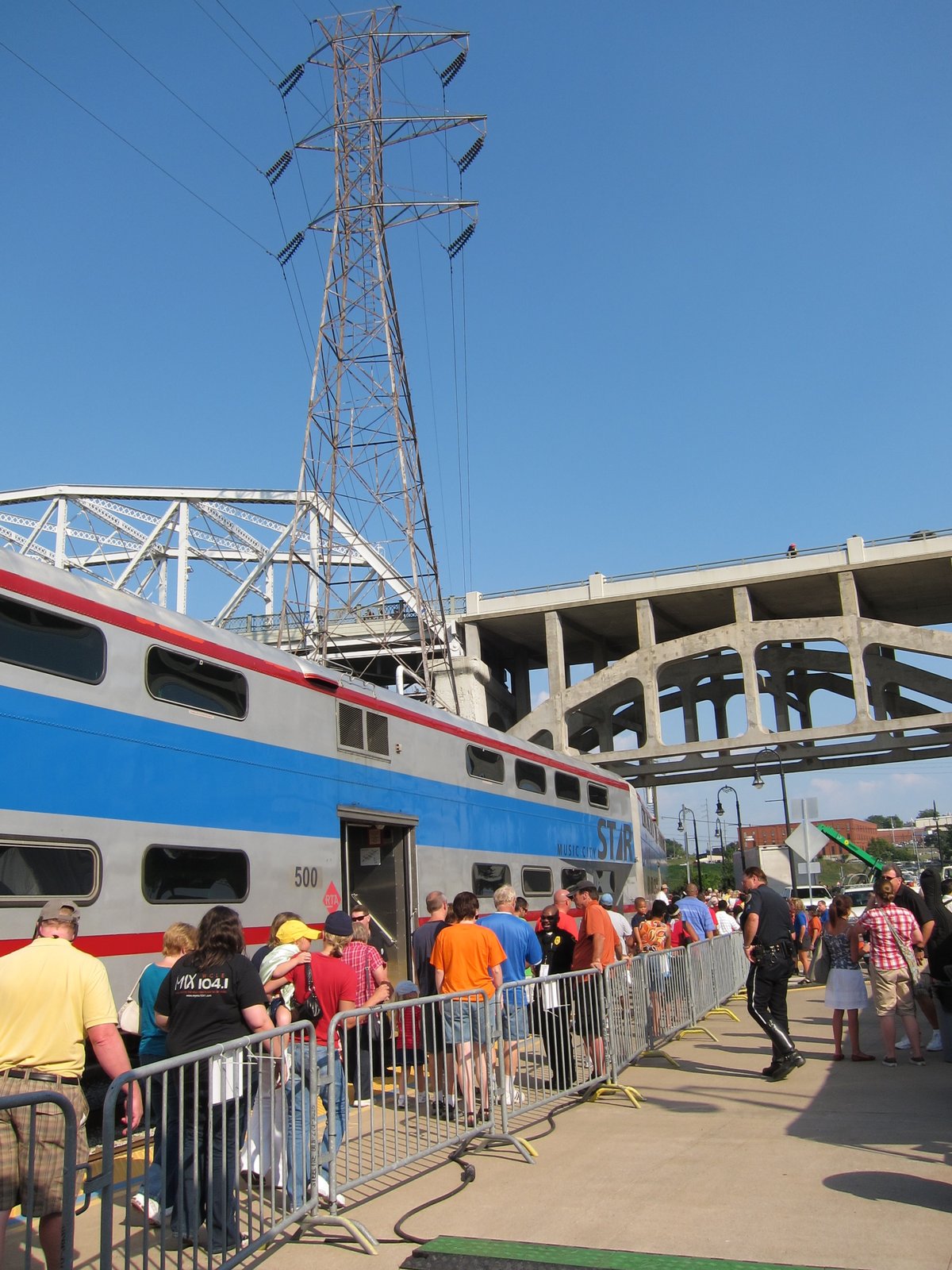
Comprehensive Guide to Visiting the John Seigenthaler Pedestrian Bridge in Nashville
Date: 18/07/2024
Introduction
The John Seigenthaler Pedestrian Bridge is an iconic landmark in Nashville, Tennessee, that offers more than just a means to cross the Cumberland River. This remarkable structure stands as a testament to both the city’s rich history and its commitment to progress. Initially constructed in 1889 as the Sparkman Street Bridge for the Louisville and Nashville Railroad, the bridge has undergone significant transformations over the years. Today, it serves as a pedestrian bridge named in honor of esteemed journalist and First Amendment advocate, John Seigenthaler, who played a pivotal role in its renovation. This guide aims to provide a comprehensive overview of the John Seigenthaler Pedestrian Bridge, including its historical significance, architectural features, visitor information, and tips for making the most of your visit. Whether you’re a local or a tourist, this landmark offers a unique blend of history, culture, and scenic beauty (Exploring the John Seigenthaler Pedestrian Bridge).
Table of Contents
- Introduction
- Historical Background and Significance
- Visitor Information
- Nearby Attractions
- Preservation Efforts
- Frequently Asked Questions (FAQ)
- Conclusion
Historical Background and Significance
Early Beginnings as a Railroad Bridge (1889-1982)
The bridge’s story begins in 1889, during a period of significant industrial expansion for Nashville. Constructed by the Louisville and Nashville Railroad, the bridge, originally named the Sparkman Street Bridge, served as a vital rail link across the Cumberland River. This steel truss bridge facilitated the transportation of goods and people, playing a crucial role in connecting Nashville to other parts of the country.
Transformation into a Pedestrian Bridge (1998-2003)
By the late 20th century, the bridge’s role as a rail line diminished. After years of closure and discussions about its future, the decision was made to repurpose the bridge into a pedestrian walkway. This transformation, completed in 2003, breathed new life into the aging structure.
Naming and Dedication (2003)
The newly renovated bridge was christened the John Seigenthaler Pedestrian Bridge in honor of the esteemed journalist and First Amendment advocate, John Seigenthaler, who played a pivotal role in shaping Nashville’s history. Seigenthaler, a prominent figure in the city, served as editor of The Tennessean newspaper and was a strong advocate for the bridge’s transformation.
The Bridge Today: A Symbol of Connectivity and Progress
Today, the John Seigenthaler Pedestrian Bridge stands as a symbol of Nashville’s evolution and its commitment to creating vibrant public spaces. The bridge serves as a vital pedestrian link between downtown Nashville and the rolling hills of East Nashville, offering stunning views of the city skyline and the Cumberland River. It has become a popular destination for locals and tourists alike, attracting walkers, joggers, cyclists, and photographers drawn to its unique blend of history and modern urban design.
Architectural Significance
The John Seigenthaler Pedestrian Bridge is a notable example of a through truss bridge, a design characterized by its triangular structural components. This type of bridge, popular in the late 19th and early 20th centuries, is known for its strength and durability. The bridge’s transformation preserved its historic truss structure while incorporating modern elements, creating a harmonious blend of old and new.
The Bridge’s Impact on Nashville
- Enhanced Connectivity: The bridge has significantly improved pedestrian and bicycle access between downtown Nashville and East Nashville, fostering a greater sense of community and connectivity.
- Economic Growth: The bridge’s presence has contributed to the revitalization of the surrounding areas, attracting businesses, restaurants, and residential development.
- Tourism Boost: As a popular tourist destination, the bridge draws visitors from around the world, boosting the local economy and enhancing Nashville’s reputation as a vibrant and walkable city.
- Community Gathering Place: The bridge has become a beloved gathering place for locals, hosting events, festivals, and community gatherings throughout the year.
Visitor Information
Visiting Hours
The John Seigenthaler Pedestrian Bridge is open to the public 24 hours a day, seven days a week. However, the best times to visit are early morning or late afternoon when the weather is cooler, and the lighting is ideal for photography.
Ticket Prices
There is no admission fee to access the John Seigenthaler Pedestrian Bridge. It is a free attraction available to all visitors.
Accessibility
The bridge is fully accessible to pedestrians, cyclists, and individuals with disabilities. There are ramps and smooth pathways to accommodate wheelchairs and strollers.
Travel Tips
- Wear Comfortable Shoes: The bridge is quite long, so comfortable walking shoes are recommended.
- Stay Hydrated: Bring water, especially during the warmer months.
- Photography: Bring a camera or smartphone to capture the stunning views of the city skyline and the Cumberland River.
- Parking: There are several parking options nearby, including public parking lots and street parking.
Nearby Attractions
- Nashville Riverfront Park: A beautiful park adjacent to the bridge, perfect for a leisurely stroll or picnic.
- Country Music Hall of Fame and Museum: Located nearby, this museum is a must-visit for music enthusiasts.
- Broadway: Just a short walk away, Broadway offers a lively nightlife scene with bars, restaurants, and live music.
Preservation Efforts
Recognizing the bridge’s historical and cultural significance, the city of Nashville has undertaken ongoing preservation efforts to ensure its longevity. These efforts include regular maintenance, structural reinforcements, and the addition of lighting to enhance its beauty at night.
Frequently Asked Questions (FAQ)
Q: What are the visiting hours for the John Seigenthaler Pedestrian Bridge? A: The bridge is open 24/7, but early morning and late afternoon are ideal times to visit.
Q: Is there an admission fee to access the bridge? A: No, the bridge is free to access.
Q: Is the bridge accessible to individuals with disabilities? A: Yes, the bridge is fully accessible with ramps and smooth pathways.
Q: Are pets allowed on the bridge? A: Yes, the bridge is pet-friendly. Just be sure to keep your pet on a leash and clean up after them.
Q: Is there parking available near the bridge? A: Yes, there are several parking options nearby, including public lots and street parking.
Q: Are there guided tours available? A: While there are no official guided tours of the bridge itself, several walking tours of Nashville include the bridge as a highlight.
Conclusion
The John Seigenthaler Pedestrian Bridge stands as a testament to Nashville’s rich history, its commitment to progress, and its ability to transform the old into something new and vibrant. Whether you’re a local or a tourist, the bridge offers a unique blend of history, architecture, and scenic beauty. Be sure to visit and experience this iconic landmark for yourself (Exploring the John Seigenthaler Pedestrian Bridge).
